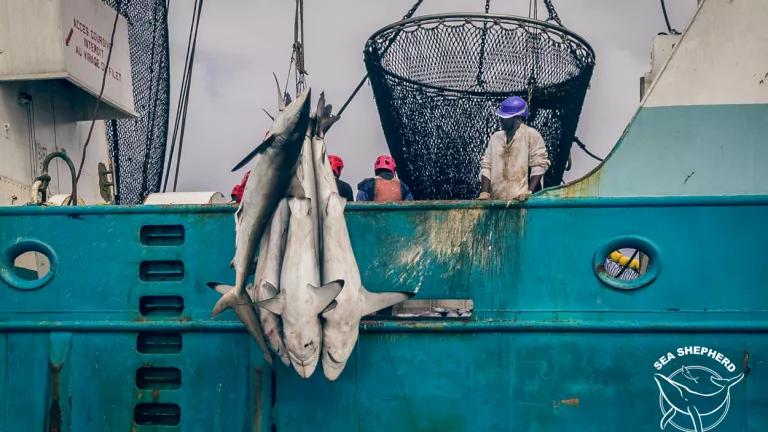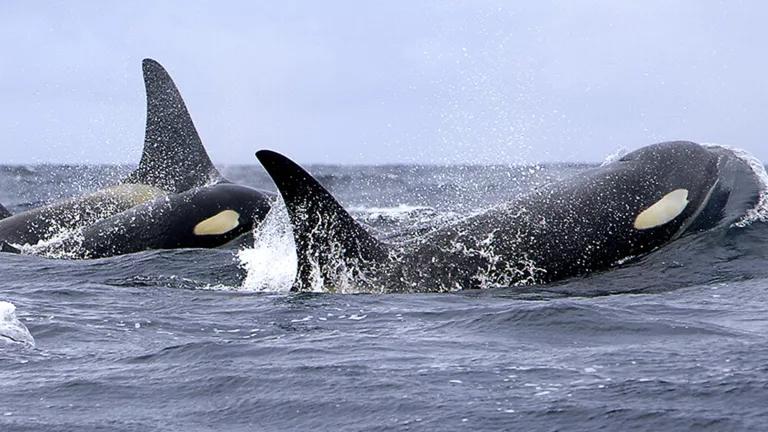400-Million-Year-Old Creatures on the Brink of Extinction

We have a decade to fix it.
It’s not shark week, but a study published recently has everyone talking about sharks anyway. Scientists took a close look at how oceanic sharks and rays are faring globally and found that these species have declined by over 70% in the last 50 years, due to a massive, 18-fold increase in fishing pressure on these vulnerable species. The scientists also found that over 75% of oceanic sharks and rays are now at risk of extinction.
The study also highlights how dramatically the extinction risk for this group of open-ocean-going sharks and rays has increased over a relatively short period. In 1980, two-thirds of these species would have fallen into the IUCN’s extinction-risk category of “least concern,” and only nine were “threatened.” Now, half of oceanic shark species are “critically endangered” or “endangered,” and they rank as one of the species groups at greatest risk of extinction, based on IUCN Red List assessments.
That the ocean’s most infamous predators are at risk is certainly not news. Nor is it news that unsustainable fishing of sharks, rays and other shark-like fish—for fins, and, increasingly, for meat—is driving declines around the globe. But this first global analysis of oceanic sharks and rays shines a flood light on the shocking scale and pace of our impact on these majestic species, which have been devastated by large-scale industrial fishing. And it argues in no uncertain terms that we need bold, urgent action if we want to save oceanic sharks and rays from population collapse.
Lead author Nathan Pacoureau said this: “While many people know that we have a decade to stop climate change, we also have only one decade to reverse biodiversity loss.” That’s a frightening thought, not only because of what it might mean to lose iconic species like sharks and rays forever—a loss that would harm ocean ecosystems, as well as coastal communities in developing nations that have relied upon sharks for protein for generations—but also because of our exceptionally poor global track record in protecting open-ocean sharks and rays thus far.
Nations and international bodies have acknowledged the need to protect these vulnerable predators—and have adopted measures to protect them—for the better part of two decades, but many shark populations are still careening towards extinction. Now, experts are telling us we have a decade to change course. In biological terms, that’s less than the blink of an eye. In political terms, the challenge seems insurmountable.
Shark conservation is a global problem that requires global action. But the U.S. can lead the way. And the good news is that there is much we can do—quickly—if we can only muster the political will to implement the protections we have already put in place. Here’s a quick list:
1. The U.S. needs to leverage its diplomacy, as well as our domestic laws, to push international fisheries organizations to enforce international shark conservation measures that already exist. For example, the U.S. is a party to the international conventions that manage tuna fishing (and sharks) across the entire Pacific and Atlantic Oceans. These bodies have adopted multiple agreements to protect oceanic sharks and rays, such as prohibitions on shark finning, retention bans for at-risk species, mandatory reporting of shark catches, and requirements that observers be present on certain types vessels to ensure that fishermen follow the rules.
Compliance with these conservation measures is pretty dismal for sharks, but the U.S. High Seas Driftnet Fishing Moratorium Protection Act directs our government to identify the nations that fail to fish by the rules, help them build capacity to address problems (a carrot) and ultimately use the stick of seafood import bans against parties that fail to correct violations. This law combines the strength of the U.S. legal framework with the power of our seafood import market (the world’s largest) to compel other nations to halt illegal, unregulated, and unreported shark fishing within their fleets—a boon to the very oceanic shark and ray species whose populations are plummeting.
2. The U.S. should step up its efforts to curb the illegal trade in shark fins and other shark products from protected species. In addition to fishing and trading sharks in our own right, the U.S. is also an important transit hub for the international shark fin trade, with fins from some of the world’s top shark-fishing nations passing through U.S. ports on their way to global markets. The U.S. has both domestic and international obligations to ensure that the trade in wildlife parts is legal and sustainable, but these “in-transit” shark fin shipments—which frequently contain fins of protected, even endangered, sharks—usually slip through the cracks of U.S. law enforcement. The U.S. has the tools it needs to put an end to this unseen illegal trade, and we should use them immediately.
3. The U.S. should adopt a federal ban on shark fin sales and halt our domestic role in perpetuating the trade. Bills to ban this trade domestically were introduced with broad bi-partisan support in 2017 and 2019, and the Shark Fin Sales Elimination Act very nearly passed Congress in December 2020. This is small, logical step that would make a huge difference for sharks globally.
4. Finally, the U.S. should move swiftly and boldly to protect 30% of the world’s oceans by 2030, including advocating for an international commitment to “30x30” at the upcoming Convention on Biological Diversity conference of parties and implementing that goal within our national waters as well, in pursuit of President Biden’s Executive Order on the climate crisis. The best science indicates that establishing highly or fully protected MPAs is crucial to protecting marine biodiversity. And while it’s true that highly migratory shark species cannot be protected entirely by establishing marine protected areas (MPAs), MPAs can play an important role in sheltering important shark habitats, like nurseries, and could help give these predators a fighting chance.
There’s a lot to do. But the U.S has all the tools it needs to start reversing the loss of the ocean’s most iconic predators. We just need to find the political will—and fast.
Thankfully, we now have President Biden at the helm. He ushers in a new administration that cares deeply about addressing the climate and biodiversity crises and recognizes that saving the ocean is absolutely critical in this fight. The U.S. can boldly lead the rest of the world to ensure that we don’t lose shark species forever—for the sake of sharks, ocean health, and our future. We don’t have a moment to lose.



